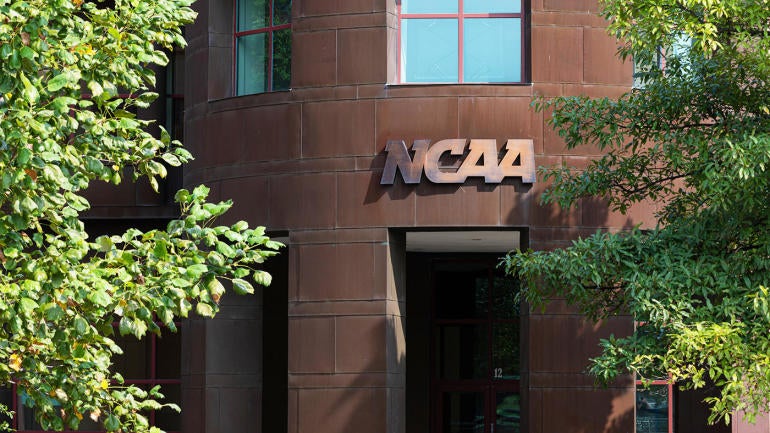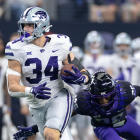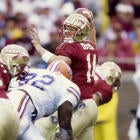
The NCAA on Friday approved several rule changes that will take effect during the 2024 season, including the implementation of coach-to-player helmet communications and a new two-minute rule that mirrors the current time system utilized by the NFL. These changes were proposed by the NCAA's Rules Committee in March amid support from some of the nation's most prominent conferences.
The helmet communication rule applies only to schools at the FBS level, but it is not a requirement. Additionally, one team may employ helmet technology even if its opponent elect otherwise.
Coaches will be allowed to communicate with one player, identified by a green dot on the back of their helmet, on the field. That line of communication will be turned off with 15 seconds left on the play clock or when the ball is snapped, whichever occurs first.
On top of player-to-helmet communications, teams can now use tablets to review in-game video only. Schools will be allocated 18 tablets that can be utilized in the coaching booth, on the sideline and in locker rooms.
Other changes approved by the NCAA Friday include:
- Penalizing horse collar tackles that occur within the tackle box as a 15-yard personal foul.
- Allowing conferences the option to use a collaborative video replay review system.
- Head coaches can now conduct interviews with broadcast partners after the first and third quarters conclude.
The NCAA used the 2023 postseason as a trial run for its technological changes with several teams utilizing helmet communications in their bowl games. Several schools have incorporated the technology in their spring games, as well, while teams acclimate to another wave of major change.
Last spring, the NCAA approved a running clock on first downs, except in the last two minutes in the second and fourth quarters. The new two-minute timeout rule falls in line with that change and also serves to alleviate potential back-to-back TV timeouts from broadcasters.
"The two-minute timeout will allow all end-of-half and end-of-game timing rules to be simplified and synch up with this timeout," Steve Shaw, secretary-rules editor said March when the changes were initially proposed. "This will also help broadcast partners to avoid back-to-back media timeouts."





















